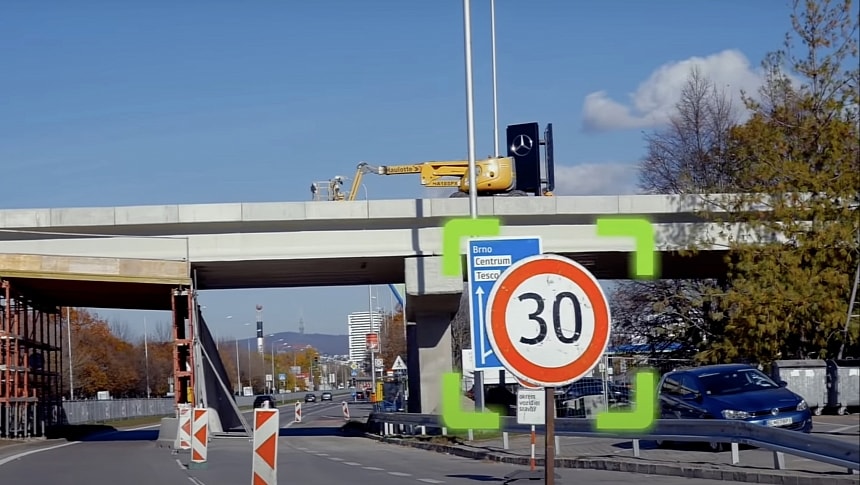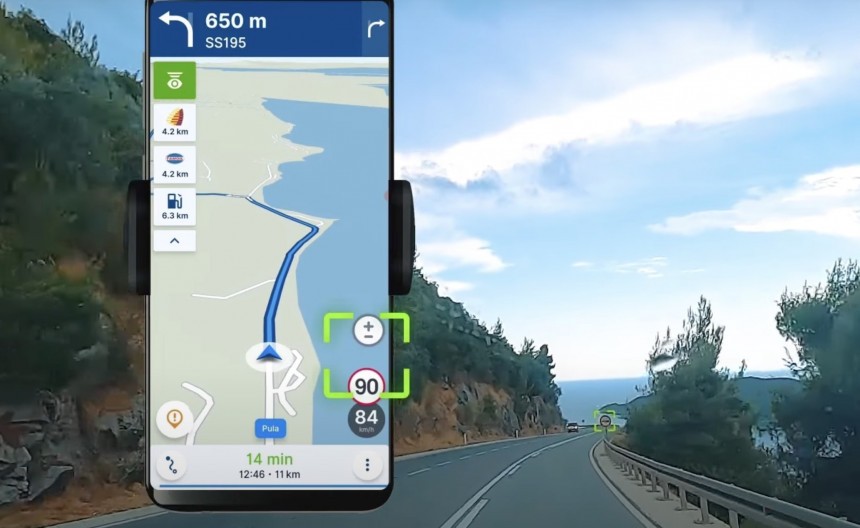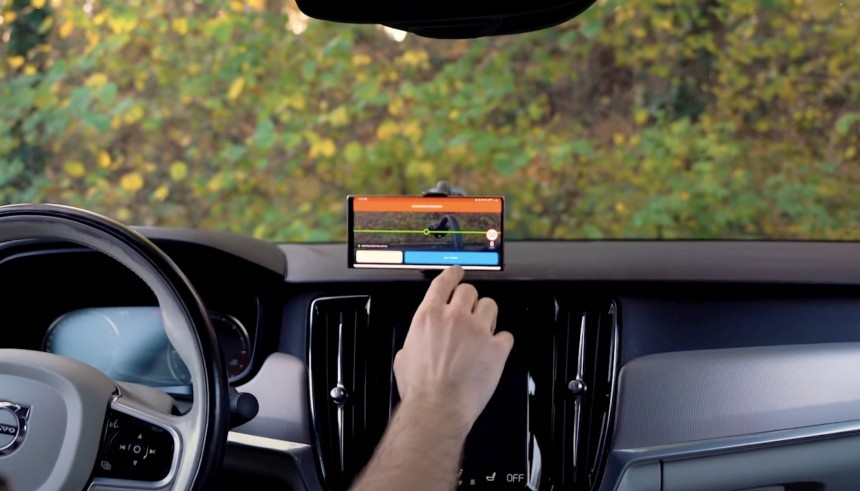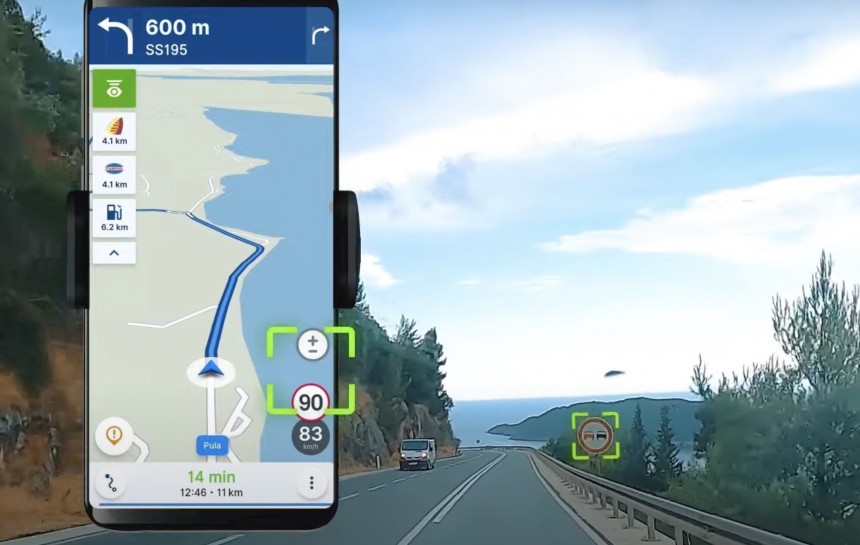Google Maps is generally referred to as the world's number one mobile navigation app, offering a nearly complete feature lineup that includes all the essentials.
However, as the mobile navigation space is becoming more competitive, the underdogs, typically the companies whose software is not available for free, develop innovative ideas that could significantly improve navigation.
Sygic GPS Navigation is one example.
The company created a traffic sign recognition system that uses your phone's camera to read speed limits and "no overtaking" signs, displaying the information on the navigation screen.
Here's how it works, its limitations, why others should adopt the same concept, and everything else you must know about this feature.
The feature's purpose is to scan the side of the road for traffic signs, read the information, and display it on the phone's screen. Missing road signs has become a major problem for drivers relying on navigation apps, mainly because these users take everything on the screen for granted. They are used to Google Maps, Waze, and Apple Maps to display accurate information, so they typically look at the navigation interface, sometimes ignoring or not even paying attention to traffic signs.
Authorities worldwide have repeatedly warned that drivers must follow traffic signs and set routes based on their indications. However, people still follow navigation apps blindly, trusting everything they say and ending up in the middle of nowhere or on roads where their vehicles don't fit.
This is why Sygic's idea is so important.
With this feature, users can continue relying on the information provided by the navigation app and be sure they receive only accurate data. However, it's vital, and I can't stress it enough, to look at road signs, too. They are the only ones that offer 100% accurate and up-to-date information on what happens on the road. Imagine you drive on a road where an accident just occurred, and authorities decided to close a section and send traffic on a detour. The temporary traffic signage is the only way to follow the detour.
Furthermore, Sygic's traffic recognition system does not guarantee it always reads information correctly.
The feature relies on your phone's camera, so you must install the mobile device on the windshield in a position that allows it to scan the road ahead. When navigation and this feature are enabled, the app keeps scanning the side of the road for traffic signs.
It's currently limited to speed limits and "no overtaking" signs, but Sygic says it's just the beginning, and its potential allows the company to expand it to crosswalks, sidewalks, and other information that could make navigation safer.
Because the feature uses the phone's camera to scan road signs, it may be unable to accurately read the information due to a damaged sign, poor image quality, bad weather, or another factor not allowing the camera to process the data correctly.
Once it reads a traffic sign, Sygic's navigation software displays the speed limit within the main navigation view.
The feature works similarly to traffic sign recognition systems integrated into new-generation cars, where the speed limit is displayed on the dashboard. The difference is that you don't need additional hardware (these cars have an onboard camera specifically for this feature), as your mobile device is in charge of the entire operation.
Sygic's technology can also read information from LED screens, and its main benefit comes down to dynamic speed limits where the user might be unable to track how the limit changes when they drive.
The other big benefit is that Sygic's GPS navigation can display more accurate speed limit information. It can use the collected data to help Sygic improve the map accuracy, eventually refining the data provided to users regardless of where they drive.
The feature is currently available in all countries except the US, Canada, and Puerto Rico and can be had with a Premium+ subscription.
Before we wrap up this piece, I must insist on the most important tidbit. Navigation apps have become must-have driving companions, especially when driving on unfamiliar roads, but the information they provide should never be taken for granted. The traffic sign recognition system makes no exception.
Because of its limitations and the reliance on the mobile phone's camera, the information you see on the screen might sometimes be inaccurate, so it's important for the driver always to pay attention to road signs, too. Sygic has developed a calibration system to help install the device correctly for accurate road sign detection, but there's no guarantee it'll always work correctly.
Eventually, I believe the idea is great, and there's a huge potential for improvement, especially because mobile phones evolve continuously, with cameras offering better performance to every new generation. While Sygic came up with this idea, others should explore it, maybe even collaborating on a universal approach that would allow navigation apps to understand speed limits better and eventually make every journey, despite the software used for navigation, safer and more predictable.
Sygic GPS Navigation is one example.
The company created a traffic sign recognition system that uses your phone's camera to read speed limits and "no overtaking" signs, displaying the information on the navigation screen.
Here's how it works, its limitations, why others should adopt the same concept, and everything else you must know about this feature.
The feature's purpose is to scan the side of the road for traffic signs, read the information, and display it on the phone's screen. Missing road signs has become a major problem for drivers relying on navigation apps, mainly because these users take everything on the screen for granted. They are used to Google Maps, Waze, and Apple Maps to display accurate information, so they typically look at the navigation interface, sometimes ignoring or not even paying attention to traffic signs.
This is why Sygic's idea is so important.
With this feature, users can continue relying on the information provided by the navigation app and be sure they receive only accurate data. However, it's vital, and I can't stress it enough, to look at road signs, too. They are the only ones that offer 100% accurate and up-to-date information on what happens on the road. Imagine you drive on a road where an accident just occurred, and authorities decided to close a section and send traffic on a detour. The temporary traffic signage is the only way to follow the detour.
Furthermore, Sygic's traffic recognition system does not guarantee it always reads information correctly.
It's currently limited to speed limits and "no overtaking" signs, but Sygic says it's just the beginning, and its potential allows the company to expand it to crosswalks, sidewalks, and other information that could make navigation safer.
Because the feature uses the phone's camera to scan road signs, it may be unable to accurately read the information due to a damaged sign, poor image quality, bad weather, or another factor not allowing the camera to process the data correctly.
Once it reads a traffic sign, Sygic's navigation software displays the speed limit within the main navigation view.
The feature works similarly to traffic sign recognition systems integrated into new-generation cars, where the speed limit is displayed on the dashboard. The difference is that you don't need additional hardware (these cars have an onboard camera specifically for this feature), as your mobile device is in charge of the entire operation.
Sygic's technology can also read information from LED screens, and its main benefit comes down to dynamic speed limits where the user might be unable to track how the limit changes when they drive.
The other big benefit is that Sygic's GPS navigation can display more accurate speed limit information. It can use the collected data to help Sygic improve the map accuracy, eventually refining the data provided to users regardless of where they drive.
Before we wrap up this piece, I must insist on the most important tidbit. Navigation apps have become must-have driving companions, especially when driving on unfamiliar roads, but the information they provide should never be taken for granted. The traffic sign recognition system makes no exception.
Because of its limitations and the reliance on the mobile phone's camera, the information you see on the screen might sometimes be inaccurate, so it's important for the driver always to pay attention to road signs, too. Sygic has developed a calibration system to help install the device correctly for accurate road sign detection, but there's no guarantee it'll always work correctly.
Eventually, I believe the idea is great, and there's a huge potential for improvement, especially because mobile phones evolve continuously, with cameras offering better performance to every new generation. While Sygic came up with this idea, others should explore it, maybe even collaborating on a universal approach that would allow navigation apps to understand speed limits better and eventually make every journey, despite the software used for navigation, safer and more predictable.











